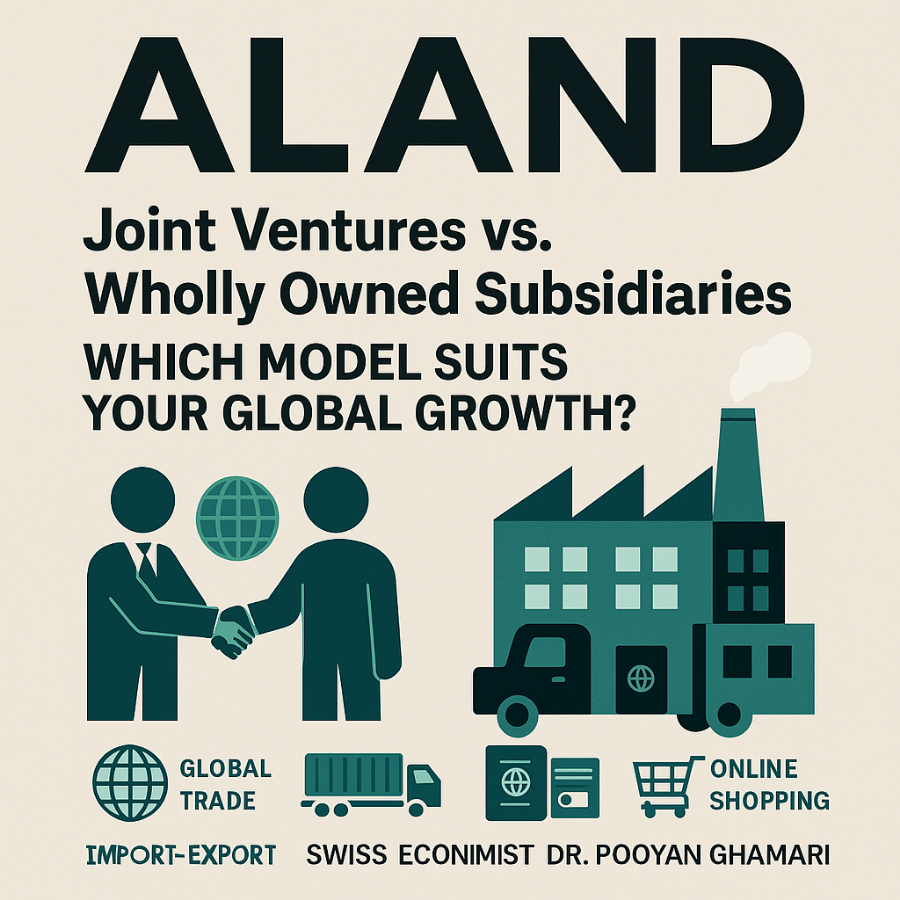
Choosing between a joint venture and a wholly owned subsidiary is a pivotal decision for entrepreneurs scaling internationally. Whether you're launching a factory in Vietnam, building an e-commerce brand in the UAE, or entering the European market through real estate, your structure affects everything from control and compliance to tax liabilities and investor perception.
Expansion Models at a Glance
Joint Ventures (JVs):
Involve partnering with a local or foreign entity, typically sharing profits, risks, and management.
Wholly Owned Subsidiaries (WOS):
Full ownership and control over the foreign operation, either through acquisition or building from scratch.
When Joint Ventures Make Sense
Market Entry with Regulatory Hurdles: Countries like China, India, or Saudi Arabia sometimes require local partners for foreign ownership.
Shared Risk in High-Volatility Markets: Political or supply chain uncertainty can be mitigated by partnering with locals who understand the terrain.
Local Licensing or Influence Needs: In markets like the GCC, access to tendered government contracts often hinges on regional connections.
Dr. Pooyan Ghamari notes, “For SMEs or digital startups entering complex or highly regulated regions, joint ventures are like training wheels. They offer momentum with minimal upfront strain—but long-term control must always be negotiated upfront.”
Benefits of Wholly Owned Subsidiaries
Full Operational Control: Perfect for high-value manufacturing facilities or large-scale e-commerce fulfillment hubs.
IP and Tech Protection: Your branding, patents, and processes stay intact without cross-sharing clauses.
Clear Profit Repatriation Structures: Especially advantageous in tax-friendly jurisdictions like the UAE’s free zones or Estonia’s e-residency scheme.
From a compliance perspective, WOS models shine when entering sectors like health tech, AI development, or e-fintech where data integrity and intellectual property are non-negotiable.
Real-World Use Cases
Import/Export & Factories:
A WOS is ideal when establishing long-term trade routes or a factory. For instance, a textile facility in Bangladesh wholly owned by a Dubai-based parent can benefit from dual incentives in both jurisdictions.Online Stores & Dropshipping:
Joint ventures may suit digital entrepreneurs expanding through influencers or regional platform partners in countries like Germany or Kuwait.Immigration Through Investment:
Some jurisdictions (e.g., Portugal, Malta, UAE) grant residency or citizenship through corporate investment—making both models viable, depending on business size and scope.
Financial & Legal Considerations
JV structures can sometimes reduce initial tax exposure, but they often lead to complex dividend and profit-sharing negotiations.
WOS requires upfront capital and risk ownership, but long-term tax planning is more streamlined.
In Dr. Ghamari’s words: “Your structure must reflect both your short-term agility and long-term ambition. Think beyond ownership—consider cultural compatibility, legal risk, and even how your entity type impacts brand trust among investors.”
Strategic Tools & Resources
Use Shop.ALand/blog to benchmark your model against regional case studies.
Visit Shop.ALand/news for real-time updates on trade treaties and bilateral partnerships.
Evaluate real estate holdings and corporate formations with support from A.Land for a dual trade and residency strategy.
Diversify your assets using EE.Gold for secure, crypto-based funding of your JV or WOS launch.
FAQs: Joint Ventures vs. Wholly Owned Subsidiaries
1. What’s the best structure for a startup entering the GCC?
A JV with a local sponsor in a free zone allows quicker market validation while preserving repatriation rights.
2. Can I switch from JV to WOS later?
Yes, many companies buy out their partners over time. Ensure your agreement includes a clear exit clause.
3. What are the key risks with JVs?
Misaligned goals, uneven capital input, and cultural disconnects are common friction points.
4. Are there tax differences between models?
Yes. Some countries tax JVs differently, especially when revenue is shared cross-border.
5. How does ownership affect residency-by-investment visas?
Owning a majority stake (51% or more) is often required for corporate-based visa applications in the EU and UAE.
6. Do online businesses benefit from JVs?
Yes. Partnering with a local logistics or influencer marketing firm can help fast-track market penetration.
7. What’s better for protecting intellectual property?
Wholly owned subsidiaries offer better control over IP, especially in tech or creative industries.
8. Is there a global trend toward one model over the other?
Post-pandemic, more companies are favoring WOS to retain digital and operational sovereignty.
9. Can I use cryptocurrency to fund a JV or WOS?
Yes. Using platforms like EE Gold ensures your funding is traceable, secure, and legally compliant.
10. How do I scale from a JV to a multinational holding?
Start with flexible JV terms, establish proof of concept, and then restructure into a WOS under a holding entity registered in a tax-efficient jurisdiction.
Explore more through Shop.ALand Blog, get real-time trade signals via Shop.ALand News, structure your global entity with A.Land, and explore asset-backed funding through EE.Gold.






































